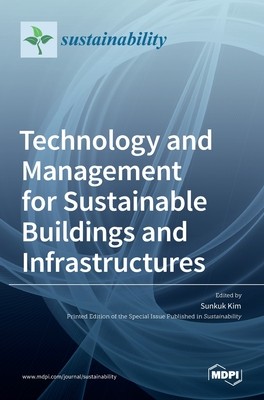
- We will send in 10–14 business days.
- Publisher: MDPI AG
- Year: 2021
- Pages: 518
- ISBN-10: 3036520694
- ISBN-13: 9783036520698
- Format: 17 x 24.4 x 4 cm, hardcover
- Language: English
- SAVE -10% with code: EXTRA
Technology and Management for Sustainable Buildings and Infrastructures (e-book) (used book) | bookbook.eu
Reviews
Description
A total of 30 articles have been published in this special issue, and it consists of 27 research papers, 2 technical notes, and 1 review paper. A total of 104 authors from 9 countries including Korea, Spain, Taiwan, USA, Finland, China, Slovenia, the Netherlands, and Germany participated in writing and submitting very excellent papers that were finally published after the review process had been conducted according to very strict standards. Among the published papers, 13 papers directly addressed words such as sustainable, life cycle assessment (LCA) and CO2, and 17 papers indirectly dealt with energy and CO2 reduction effects. Among the published papers, there are 6 papers dealing with construction technology, but a majority, 24 papers deal with management techniques.
The authors of the published papers used various analysis techniques to obtain the suggested solutions for each topic. Listed by key techniques, various techniques such as Analytic Hierarchy Process (AHP), the Taguchi method, machine learning including Artificial Neural Networks (ANNs), Life Cycle Assessment (LCA), regression analysis, Strength-Weakness-Opportunity-Threat (SWOT), system dynamics, simulation and modeling, Building Information Model (BIM) with schedule, and graph and data analysis after experiments and observations are identified.
EXTRA 10 % discount with code: EXTRA
The promotion ends in 17d.01:49:42
The discount code is valid when purchasing from 10 €. Discounts do not stack.
- Publisher: MDPI AG
- Year: 2021
- Pages: 518
- ISBN-10: 3036520694
- ISBN-13: 9783036520698
- Format: 17 x 24.4 x 4 cm, hardcover
- Language: English English
A total of 30 articles have been published in this special issue, and it consists of 27 research papers, 2 technical notes, and 1 review paper. A total of 104 authors from 9 countries including Korea, Spain, Taiwan, USA, Finland, China, Slovenia, the Netherlands, and Germany participated in writing and submitting very excellent papers that were finally published after the review process had been conducted according to very strict standards. Among the published papers, 13 papers directly addressed words such as sustainable, life cycle assessment (LCA) and CO2, and 17 papers indirectly dealt with energy and CO2 reduction effects. Among the published papers, there are 6 papers dealing with construction technology, but a majority, 24 papers deal with management techniques.
The authors of the published papers used various analysis techniques to obtain the suggested solutions for each topic. Listed by key techniques, various techniques such as Analytic Hierarchy Process (AHP), the Taguchi method, machine learning including Artificial Neural Networks (ANNs), Life Cycle Assessment (LCA), regression analysis, Strength-Weakness-Opportunity-Threat (SWOT), system dynamics, simulation and modeling, Building Information Model (BIM) with schedule, and graph and data analysis after experiments and observations are identified.


Reviews